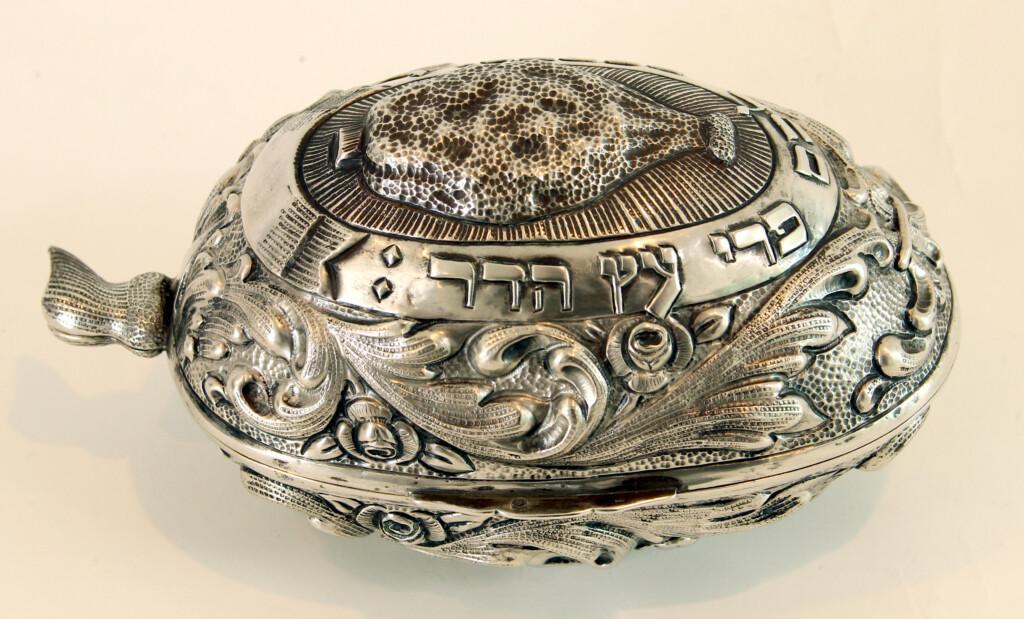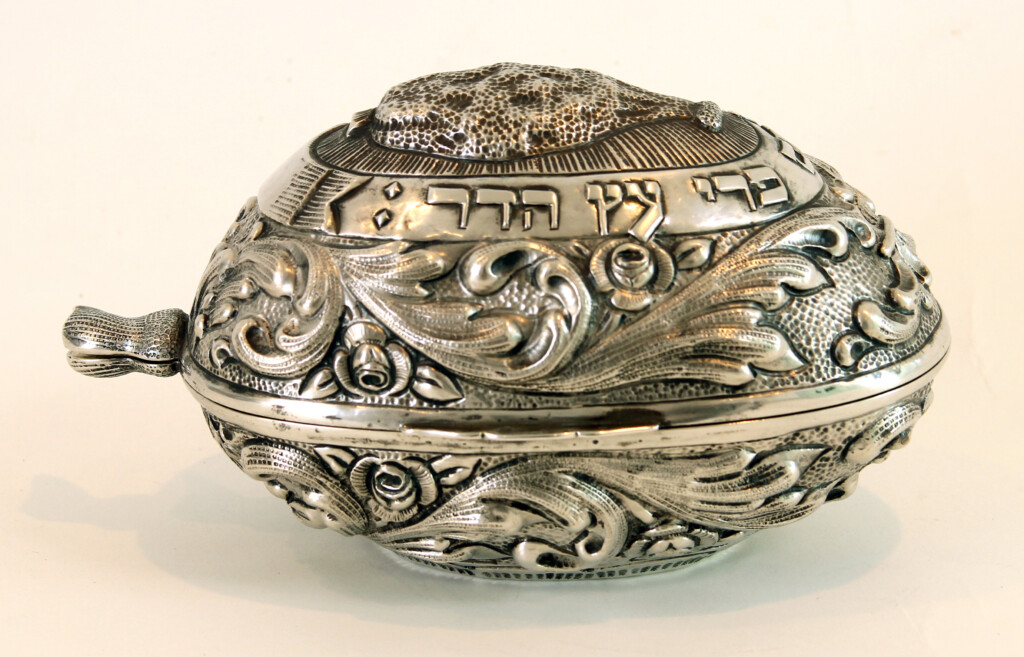TIOH Art Tour: Etrog Boxes
- Artists Unknown
- Austria, c. 1900
- Sterling silver
- Materials
- Sterling silver. Hand chased in form of the citron fruit with floral design and scriptural Hebrew citation “Pre Etz Hadar” on top. Engraved on bottom w/Hebrew dedication.
- Sterling silver. Oval Shaped, fluted, engraved and embossed bearing Hebrew inscription on lid and container: Asher Kiddisham B’Mitzvotav Al Netilat Lulav
- Gifts of the Briskin Family



Each year on the harvest festival of Sukkot, Jews from around the world, take special efforts to obtain a lulav (a collection of palm, myrtle and willow branches) and an etrog (a citron, known in the Torah as the fruit of the hadar tree) in order to engage in an ancient ritual of waving them while reciting special blessings of joy and gratitude. As the Torah declares, “On the first day you shall take the product of hadar trees, branches of palm trees, boughs of leafy trees, and willows of the brook, and you shall rejoice before the Eternal your God seven days” (Leviticus 23:40).
There are many rules surrounding the etrog. Among other requirements, the etrog’s pitom (its stigma and style) cannot be unnaturally broken off, if it is to be considered kosher, or fit for ritual use. Traditionally, Jews have taken great pains to select a beautiful etrog for the fulfillment of this mitzvah, this commandment, sometimes even paying outlandish prices for a particularly exquisite piece of fruit.
The etrog box, then, emerges as both a utilitarian container, as well as an art piece in and of itself. These silver boxes are shaped like the etrog and are decorated with motifs representing the fruit and leaves of the lulav and etrog. Each box contains references to the mitzvah of taking the lulav and etrog. The first etrog box quotes the Torah’s commandment, “And you shall take the product of the hadar tree,” while celebrating the likeness of the etrog in the center of its hinged lid. On its lid, the second box cites the Hebrew text of the ritual blessing for waving the lulav and etrog, ending with the words “who commands us to take the lulav,” while joyfully declaring “the holiday of Sukkot, a time for joy,” around its body.
Home